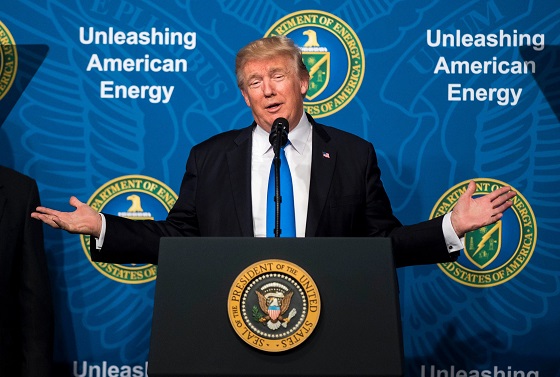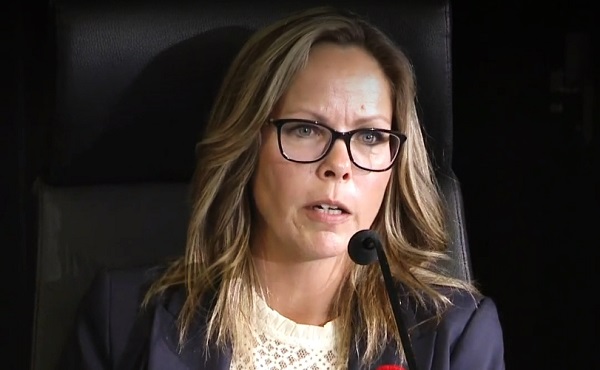Uncategorized
Got $1,100? Apple shows off its most expensive iPhone yet

CUPERTINO, Calif. — Apple unveiled three new iPhones on Wednesday, including its biggest and most expensive model yet, as the company seeks to widen the product’s appeal amid slowing sales.
CEO Tim Cook showed off the iPhone XS Max, which has a bigger screen than the one on last year’s dramatically designed model , the iPhone X. It’ll cost about $1,100, topping the iPhone X, which at $1,000 seemed jaw-dropping at the time. An updated iPhone X, now called the XS, stays at $1,000.
As with the iPhone X, both new phones have screens that run from edge to edge, an effort to maximize the display without making the phone too awkward to hold. The screen needs no backlight, so black would appear as truly black rather than simply dark. The Max model looks to be about the size of the iPhone 8 Plus, though the screen size is much larger.
The iPhone XS Max, which will be available on Sept. 21 — with orders open the week before — represents Apple’s attempt to feed consumers’ appetite for increasingly larger screens as they rely on smartphones to watch and record video and to take photos wherever they are.
By making more expensive iPhones, Apple has been able to boost its profits despite waning demand as people upgrade phones less frequently. IPhones fetched an average price of $724 during the April-June period, a nearly 20
Apple also showed off a cheaper iPhone, called the iPhone XR. It has a traditional, lower-quality screen and an aluminum body; it’s physically smaller than the iPhone 8 Plus but has a bigger screen. It’ll cost roughly $750 and come out on Oct. 26.
All three new models join the iPhone X in getting rid of the home button to make room for more screen. They will have facial-recognition technology to unlock the device.
Although it didn’t sell quite as analysts anticipated, the iPhone X still emerged as the most popular in Apple’s line-up, according to Cook. That emboldened the company to aim an even more expensive device at the affluent households that tend to gravitate to its products, especially in the U.S. and Europe.
For everyone else, many of whom are still using iPhones they purchased several years ago, there’s the XR.
“I am going to go out on a limb and say the XR is going to become Apple’s top-selling iPhone,” said analyst Patrick Moorhead of Moor Insights. “It is a smart strategy to keep more people in the Apple ecosystem and get even more people to come into it.”
The next major update to the iOS will be released next Tuesday, followed a week later by a Mac software update. Both will be free to install.
Apple also announced updates that push its Apple Watch further into medical device territory. It has a larger screen and a built-in heart sensor that the company said can detect irregular heart rates and perform an electrocardiogram. The latter feature has been cleared by the U.S. Food and Drug Administration, the company said.
Ben Wood of CCS Insight said getting U.S. regulatory clearance for that is a milestone that underscores the company’s leadership in health and fitness. Typically, smartwatches are marketed as consumer devices, not medical ones needing clearance.
These features will be available to U.S. customers later this year, but Apple did not say when it would make it to the rest of the world.
In addition, Apple said the Series 4 Apple Watch will also be able to detect when someone falls — and can tell the difference between a trip and a fall. If it detects a fall and the user doesn’t respond in a minute, it’ll automatically call for help. This feature may be especially attractive to older people or those with elderly parents worried about falling when no one is around to help.
___
AP Technology Writer Barbara Ortutay contributed from New York.
__
This story has been corrected to refer to the larger iPhone as the iPhone XS Max.
Michael Liedtke, The Associated Press
Uncategorized
Trump Admin Establishing Council To Make Buildings Beautiful Again


From the Daily Caller News Foundation
By Jason Hopkins
The Trump administration is creating a first-of-its-kind task force aimed at ushering in a new “Golden Age” of beautiful infrastructure across the U.S.
The Department of Transportation (DOT) will announce the establishment of the Beautifying Transportation Infrastructure Council (BTIC) on Thursday, the Daily Caller News Foundation exclusively learned. The BTIC seeks to advise Transportation Secretary Sean Duffy on design and policy ideas for key infrastructure projects, including highways, bridges and transit hubs.
“What happened to our country’s proud tradition of building great, big, beautiful things?” Duffy said in a statement shared with the DCNF. “It’s time the design for America’s latest infrastructure projects reflects our nation’s strength, pride, and promise.”
“We’re engaging the best and brightest minds in architectural design and engineering to make beautiful structures that move you and bring about a new Golden Age of Transportation,” Duffy continued.
Mini scoop – here is the DOT’s rollout of its Beautifying Transportation Infrastructure Council, which will be tasked with making our buildings beautiful again. pic.twitter.com/
9iV2xSxdJM — Jason Hopkins (@jasonhopkinsdc) October 23, 2025
The DOT is encouraging nominations of the country’s best architects, urban planners, artists and others to serve on the council, according to the department. While ensuring that efficiency and safety remain a top priority, the BTIC will provide guidance on projects that “enhance” public areas and develop aesthetic performance metrics.
The new council aligns with an executive order signed by President Donald Trump in August 2025 regarding infrastructure. The “Making Federal Architecture Beautiful Again” order calls for federal public buildings in the country to “respect regional architectural heritage” and aims to prevent federal construction projects from using modernist and brutalist architecture styles, instead returning to a classical style.
“The Founders, in line with great societies before them, attached great importance to Federal civic architecture,” Trump’s order stated. “They wanted America’s public buildings to inspire the American people and encourage civic virtue.”
“President George Washington and Secretary of State Thomas Jefferson consciously modeled the most important buildings in Washington, D.C., on the classical architecture of ancient Athens and Rome,” the order continued. “Because of their proven ability to meet these requirements, classical and traditional architecture are preferred modes of architectural design.”
The DOT invested millions in major infrastructure projects since Trump’s return to the White House. Duffy announced in August a $43 million transformation initiative of the New York Penn Station in New York City and in September unveiledmajor progress in the rehabilitation and modernization of Washington Union Station in Washington, D.C.
The BTIC will comprise up to 11 members who will serve two-year terms, with the chance to be reappointed, according to the DOT. The task force will meet biannually. The deadline for nominations will end Nov. 21.
Uncategorized
New report warns WHO health rules erode Canada’s democracy and Charter rights

The Justice Centre for Constitutional Freedoms has released a new report titled Canada’s Surrender of Sovereignty: New WHO health regulations undermine Canadian democracy and Charter freedoms. Authored by Nigel Hannaford, a veteran journalist and researcher, the report warns that Canada’s acceptance of the World Health Organization’s (WHO) revised International Health Regulations (IHR) represents a serious erosion of national independence and democratic accountability.
The IHR amendments, which took effect on September 19, 2025, authorize the WHO Director-General to declare global “health emergencies” that could require Canada to follow directives from bureaucrats in Geneva, bypassing the House of Commons and the will of Canadian voters.
The WHO regards these regulations as “binding,” despite having no ability or legal authority to impose such regulations. Even so, Canada is opting to accept the regulations as binding.
By accepting the WHO’s revised IHR, the report explains, Canada has relinquished its own control over future health crises and instead has agreed to let the WHO determine when a “pandemic emergency” exists and what Canada must do to respond to it, after which Canada must report back to the WHO.
In fact, under these International Health Regulations, the WHO could demand countries like Canada impose stringent freedom-violating health policies, such as lockdowns, vaccine mandates, or travel restrictions without debate, evidence review, or public accountability, the report explains.
Once the WHO declares a “Pandemic Emergency,” member states are obligated to implement such emergency measures “without delay” for a minimum of three months.
Importantly, following these WHO directives would undermine government accountability as politicians may hide behind international “commitments” to justify their actions as “simply following international rules,” the report warns.
Canada should instead withdraw from the revised IHR, following the example of countries like Germany, Austria, Italy, Czech Republic, and the United States. The report recommends continued international cooperation without surrendering control over domestic health policies.
Constitutional lawyer Allison Pejovic said, “[b]y treating WHO edicts as binding, the federal government has effectively placed Canadian sovereignty on loan to an unelected international body.”
“Such directives, if enforced, would likely violate Canadians’ Charter rights and freedoms,” she added.
Mr. Hannaford agreed, saying, “Canada’s health policies must be made in Canada. No free and democratic nation should outsource its emergency powers to unelected bureaucrats in Geneva.”
The Justice Centre urges Canadians to contact their Members of Parliament and demand they support withdrawing from the revised IHR to restore Canadian sovereignty and reject blind compliance with WHO directives.
-

 Justice1 day ago
Justice1 day agoCarney government lets Supreme Court decision stand despite outrage over child porn ruling
-

 Daily Caller2 days ago
Daily Caller2 days agoUS Eating Canada’s Lunch While Liberals Stall – Trump Admin Announces Record-Shattering Energy Report
-

 Business1 day ago
Business1 day agoCarney’s budget spares tax status of Canadian churches, pro-life groups after backlash
-

 COVID-191 day ago
COVID-191 day agoFreedom Convoy leader Tamara Lich to appeal her recent conviction
-

 Business2 days ago
Business2 days agoPulling back the curtain on the Carney government’s first budget
-

 Energy2 days ago
Energy2 days agoEby should put up, shut up, or pay up
-

 Business2 days ago
Business2 days agoThe Liberal budget is a massive FAILURE: Former Liberal Cabinet Member Dan McTeague
-

 Daily Caller1 day ago
Daily Caller1 day agoUN Chief Rages Against Dying Of Climate Alarm Light










